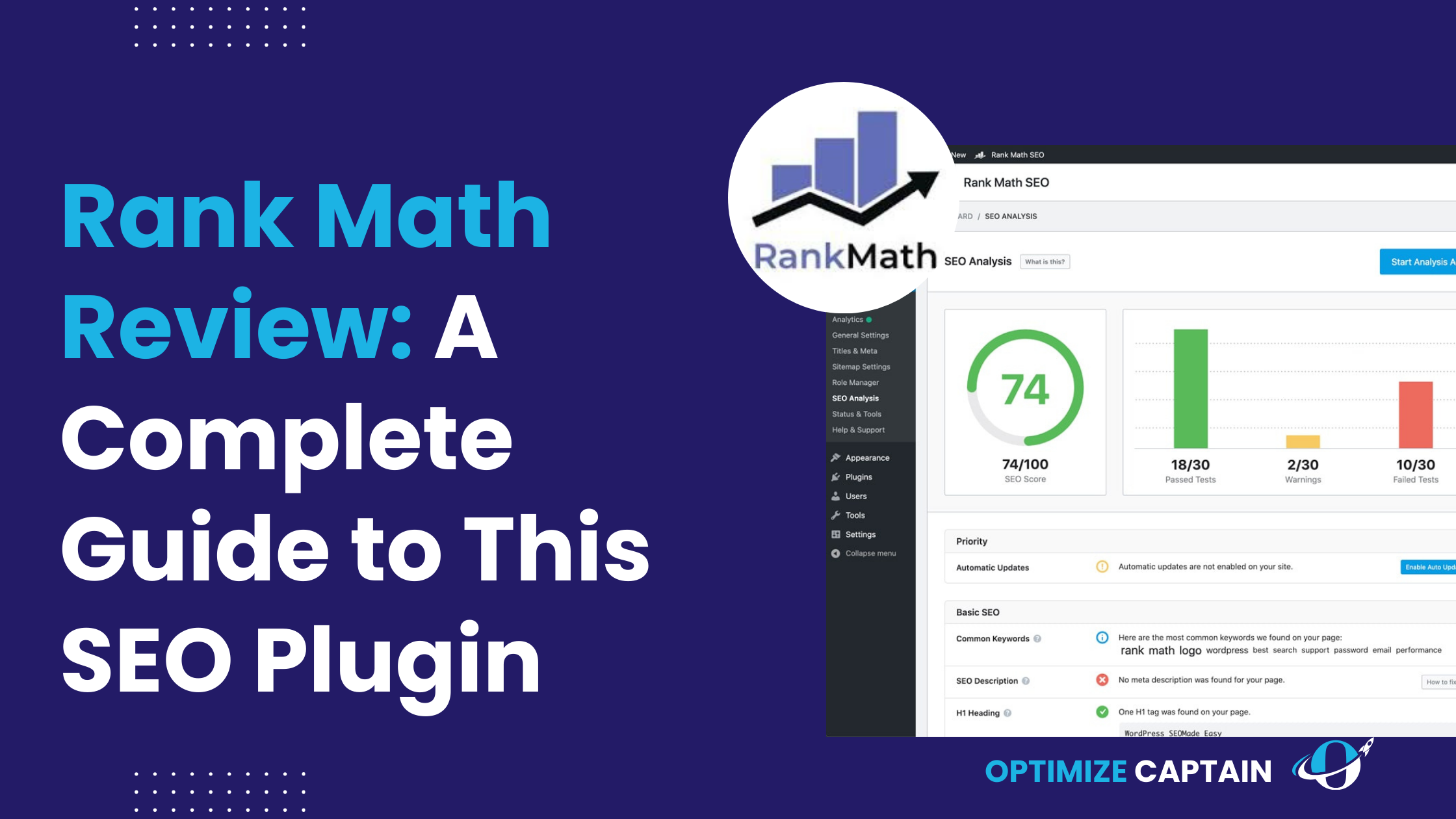SEO is a battleground, and if you’re not keeping an eye on your competitors, you’re missing opportunities. Competitor analysis goes beyond simply checking where others rank—it’s about understanding their SEO strategies, leveraging their strengths, and capitalizing on their weaknesses.
This SEO competitor analysis checklist will walk you through every step of the process, so you can dominate the search results in 2024.
Introduction to SEO Competitor Analysis
SEO competitor analysis is your key to understanding why some websites consistently outrank others. It helps you identify what’s working in your industry, where your site might be lagging, and how to craft a plan to overtake competitors.
Why It Matters in 2024
- Stay Ahead of Google Updates: As Google refines its algorithms, focusing more on user experience and content quality, competitor analysis helps you adapt faster. If a competitor sees a boost from a new content strategy post-update, you can learn and implement similar tactics.
- Identify Market Shifts: SEO is dynamic. Tracking competitors allows you to spot shifts in keyword trends, new content types, or emerging competitors before they become a threat.
Benefits of a Proactive Approach
- Find New Opportunities: By analyzing competitors’ keyword strategies, you might discover high-intent keywords they’re ranking for that you haven’t targeted yet.
- Learn From Mistakes: Spotting a drop in a competitor’s rankings could reveal penalties or strategy failures you can avoid. For example, if they lose ranking after aggressive link-building, you’ll know to avoid a similar approach.
Identify Your True Competitors
Knowing your competitors is the first step, but in SEO, this often goes beyond just your direct business rivals. Let’s break it down:
Manual Search: The Old-School Method That Works
- Google Your Target Keywords: Search your main keywords and make a list of the top 10 sites that appear. These are your SEO competitors.
- Spot the Unexpected: Are there blogs, review sites, or local directories that keep popping up? These could be competitors for specific queries, even if they’re not selling the same product.
- Example: If you’re a SaaS platform offering CRM software, searching for “best CRM for small businesses” might reveal blogs ranking in the top spots. These blogs could be valuable allies for guest posting—or tough competitors.
Using SEO Tools for Competitor Identification
- Ahrefs’ Competing Domains: This feature shows you which websites rank for the same terms. It’s like having a window into your competitor’s keyword world.
- SEMrush’s Organic Competitors Report: This tool identifies competitors based on shared keyword rankings. Use filters to narrow down the analysis to competitors within specific regions or industries.
Differentiate Between Competitor Types
- Direct Competitors: Those offering similar products or services.
- SEO Competitors: Websites ranking for the same target keywords, regardless of industry.
- Niche Competitors: Blogs, local sites, or niche forums that dominate for specific long-tail keywords.

Setting Clear Goals for Competitor Analysis
Without clear goals, your analysis might turn into a data overload. Let’s define the focus areas:
Define What You Want to Achieve
- Improve Keyword Rankings: Focus on analyzing competitors’ keyword strategies, including which terms bring them the most traffic.
- Enhance Content Strategy: Look for gaps in their content—topics they cover that you don’t.
- Boost Backlink Profile: Analyze competitors’ backlink sources to find link-building opportunities for your own site.
Align Analysis with Business Goals
- Market Expansion: Planning to enter a new region? Focus on competitors who already rank in those locations.
- Brand Awareness: Look at competitors with strong social engagement and PR presence to understand how they’ve built their visibility.
Example: If your goal is to increase leads, analyze competitors’ landing pages. What types of CTAs (calls-to-action) are they using? Are they offering free trials, demos, or guides?
Track Success Using Metrics
- Organic Traffic: Monitor changes in traffic volume for the keywords you’re targeting.
- Backlinks: Track the number and quality of backlinks gained from target sites.
- Engagement Rates: Use tools like Google Analytics to compare engagement metrics such as bounce rate, average session duration, and conversion rates.
Pro Insight: Use SMART goals—Specific, Measurable, Achievable, Relevant, and Time-bound—to ensure your analysis stays focused and actionable.
Competitor Authority Score Analysis
Authority scores are a quick way to gauge a website’s strength, but it’s the details that tell the full story.
How to Use Authority Scores Effectively
- SEMrush’s Authority Score: This combines factors like backlinks, organic search traffic, and site performance to give an overall score. Use it to see where you stand compared to your competitors.
- Ahrefs’ Domain Rating (DR): Focuses on the strength of a site’s backlink profile. A high DR suggests a robust network of high-quality links.
Digging Into the Details
- Backlink Quality Analysis: Look at your competitor’s top referring domains. Are they getting backlinks from trusted industry sites, news outlets, or .edu domains? Focus on building relationships with similar sources.
- Track Score Changes Over Time: A sudden increase in a competitor’s authority might indicate successful PR efforts or a viral content piece. If they’ve recently published a report or whitepaper that’s earning links, consider creating your own authoritative content on a similar topic.
Related Read- Essential Strategies for Securing High-Quality Backlinks for SaaS Companies
For Instance Competitor A’s authority jumped 15% after being featured in a popular industry podcast. Reach out to similar podcasts or influencers to secure a feature for your own site.

Competitor Keyword Analysis
Understanding your competitors’ keywords is like having a map to their content strategy. It shows you what’s working for them and where the opportunities lie.
How to Perform a Keyword Gap Analysis
- Use Ahrefs’ Content Gap Tool: This tool compares your site’s keyword rankings against multiple competitors. Focus on keywords where your competitors rank well, but your site is missing.
- Filter for High-Intent Keywords: Prioritize keywords that signal buyer intent, such as “best,” “compare,” or “buy.” For example, if a competitor ranks for “best CRM software for startups,” create a comprehensive review or guide targeting that phrase.
Finding Untapped Keywords
- Use SEMrush’s Keyword Magic Tool: Discover long-tail keywords your competitors aren’t targeting. These often have lower competition but higher conversion potential.
- Example: Instead of targeting broad terms like “project management tools,” find specific phrases like “project management tools with Gantt charts.” These keywords attract a more qualified audience, closer to making a purchase.
Analyze Keyword Usage in Competitor Content
- Keyword Placement: Study where competitors place their primary and secondary keywords—are they optimized in headings, meta descriptions, and image alt text?
- Content Clustering: Look for keyword clusters—groups of related terms that competitors target across multiple pieces of content. Clustering can improve your authority for a broader topic.

Related Read: 8 Essential Steps to Master B2B SaaS Keyword Research in 2024
Competitor Content Gap Analysis
A content gap analysis helps you find the topics that your competitors cover but you don’t—these are your opportunities.
Steps to Find Content Gaps
- Use BuzzSumo to Analyze Top Content: Look for topics and content types (videos, listicles, how-tos) that drive the most engagement.
- Explore Ahrefs’ Top Pages: This feature shows the pages driving the most traffic for your competitors. Identify the key topics they rank for that you haven’t covered.
- Example: If a competitor’s guide on “remote team management” ranks highly, create a more detailed, data-backed version with expert quotes and actionable tips.
Content Quality Analysis
- Readability and Engagement: Use Hemingway App or Grammarly to see if your competitors’ content is more readable or engaging. Shorter sentences, active voice, and well-structured paragraphs often perform better.
- Multimedia Enhancements: Add images, videos, or infographics to make your content more engaging. If a competitor’s blog post lacks visuals, adding a step-by-step video could make your version more appealing to readers.
Content Depth and Frequency
- Frequency of Updates: Check how often competitors update their content. Fresh content tends to rank better, so keeping your articles updated with new data can give you an edge.
- Example: If a competitor’s popular post hasn’t been updated in over a year, refresh your own content on a similar topic with the latest statistics and trends.

Backlink Profile Analysis
A solid backlink profile can be the difference between ranking on page 1 or page 3. Here’s how to analyze and replicate your competitors’ success.
Use Ahrefs’ Link Intersect Tool
- Identify Common Backlink Sources: Find domains that link to two or more of your competitors but not to you. These sites are prime targets for your outreach campaigns.
- Pitching for Backlinks: Reach out with a clear pitch, highlighting why your content is a valuable resource for their audience. Personalization is key—reference a recent article or point out a broken link that your content could replace.
Focus on High-Quality Links
- Analyze Top Referring Domains: Focus on the authority of the domains linking back to your competitors. For example, if they’re getting links from industry magazines or niche news sites, target those publications with your own unique data or insights.
- Track New and Lost Links: Use Ahrefs to see which backlinks competitors have gained or lost recently. If they’ve lost a link from a high-authority site, reach out with a better resource to fill that gap.
Example: Strategic Backlink Building
- Competitor B gained 50 new backlinks from a whitepaper on industry trends. Create a similar or more comprehensive whitepaper to attract links from the same sources.
Pro Tip: Build “linkable assets” like original research, in-depth guides, or data-driven infographics that attract backlinks organically.
Technical SEO Audit of Competitors
Technical SEO issues can silently drag down a website’s performance. Analyzing competitors’ technical setups helps you find areas where you can gain an edge.
How to Conduct a Technical SEO Audit
- Crawl Competitor Sites with Screaming Frog: Use this tool to identify common issues like broken links, redirect chains, or missing meta tags.
- Check Core Web Vitals: Google’s PageSpeed Insights can show how competitors fare in terms of loading speed, interactivity, and visual stability. If their mobile speed is lacking, ensure your mobile pages load faster.
Structured Data for Rich Snippets
- Check for Schema Markup: Use Google’s Rich Results Test to see if competitors use schema markup like FAQ or Product schema. Implementing this can give you an edge by improving how your listings appear in search results.

Turning Analysis into Actionable Strategy
Turning your competitor’s insights into a plan of action is where the real gains are made.
Prioritize Quick Wins and Long-Term Gains
- Quick Wins: Update existing content for identified keyword gaps, and reach out for backlinks to sites already linking to your competitors.
- Long-Term Projects: Develop a content calendar targeting keyword gaps, build relationships with high-authority backlink sources, and focus on improving your Core Web Vitals.
Build a Content Calendar
Use insights from your analysis to fill content gaps. Plan out new articles, guides, and multimedia content that target the keywords and topics you’ve identified.
Related Read: How to Create an Effective Content Calendar for Your SaaS
Example: Step-by-Step Execution
- Month 1: Focus on updating outdated content and targeting quick-win keywords.
- Month 2-3: Launch a link-building campaign targeting sites from the Link Intersect analysis.
- Month 4-6: Create new content based on identified gaps and improve site speed and technical SEO.

Best Tools for Competitor Analysis
Having the right tools can make or break your analysis. Here’s what to use and when:
- Ahrefs: Ideal for keyword research, backlink analysis, and identifying content gaps. Use the Site Explorer and Content Gap tools to dive deep into competitors’ strategies.
- SEMrush: Best for tracking organic performance, keyword trends, and monitoring SERP changes. The Organic Research tool helps you see which pages bring the most traffic to your competitors.
- Screaming Frog: Essential for technical SEO audits. It helps you find broken links, duplicate content, and other site structure issues.
- BuzzSumo: Perfect for analyzing the social performance of your competitors’ content and identifying trending topics.
Conclusion
SEO competitor analysis is not just about understanding what others are doing—it’s about turning those insights into action. By following this comprehensive checklist, you can identify gaps, adjust your strategy, and stay one step ahead in the race for organic traffic. Remember, SEO is a marathon, not a sprint. Keep refining your tactics, stay updated on the latest trends, and always be ready to adapt.
With the right approach, 2024 can be the year you outpace the competition, dominate search results, and drive meaningful growth for your business.
FAQ’s
1. Why is competitor analysis important for SEO in 2024?
Competitor analysis helps you understand why certain websites outrank yours in search results. It shows you the strategies they use for keywords, content, and backlinks, giving you a chance to adapt and improve your own approach. In 2024, with frequent Google algorithm updates, it’s crucial to stay updated on what’s working for others in your industry.
2. How do I identify my true SEO competitors?
To find your SEO competitors, search for your main keywords in Google and see which websites consistently appear at the top. You can also use tools like Ahrefs or SEMrush to discover sites that rank for similar terms. Remember, these aren’t always direct business competitors—they can be blogs or review sites that rank for the same search terms as you.
3. What are the best tools for SEO competitor analysis?
The right tools make a big difference in competitor analysis. Ahrefs is great for checking backlinks and keyword gaps, while SEMrush provides detailed insights into keyword performance and traffic. Screaming Frog is perfect for technical audits, and BuzzSumo can help you see which content topics are getting the most shares and engagement.
4. How often should I do an SEO competitor analysis?
It’s a good idea to perform a competitor analysis every three months. SEO is always changing, with new competitors entering the field and Google’s algorithm evolving. A quarterly review helps you stay on top of trends and adjust your strategy as needed to keep up with or surpass your competition.
5. What is a keyword gap analysis, and why is it useful?
A keyword gap analysis compares the keywords your competitors rank for with those you don’t. It helps you find opportunities where you can create content or optimize existing pages to capture more traffic. This way, you can target keywords that are already working for others but that you might have missed.
These responses offer a balanced length, providing clear explanations while keeping them reader-friendly and engaging. Let me know if this fits what you had in mind!




